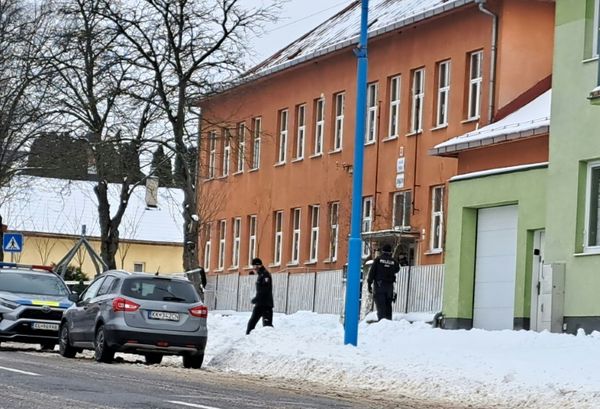
Over the summer, while announcing the disbanding of a controversial plainclothes unit of the New York City Police Department after weeks of Black Lives Matter protests, Police Commissioner Dermot Shea referred to the need for “21st-century policing” that would use a range of technological tools—ShotSpotter (a sensor system that estimates the location of gunfire), video, DNA, and more—instead of “brute force.” Reliance on such technologies could become the norm as calls for police reform—in particular, the defunding of the police—take root around the country. However, making such changes without adequate public oversight could result in Black people being surveilled and controlled even further.
To see the effects of surveillance technology on societies, look to the experiences of both authoritarian regimes such as China and North Korea and democracies such as Mexico and Israel. Although authoritarian governments with little or no commitment to political rights may appear best poised to deploy sophisticated surveillance technology on a large scale, many nations deployed surveillance systems after 9/11, ostensibly for national security purposes. And since then, a 2019 study by the Carnegie Endowment for International Peace found, liberal democracies and many developing countries have continued racing to implement technological solutions to make their borders “smarter,” policing “safer,” and their citizens better monitored.
Put together, new technologies can track an individual’s location and movements, shopping habits, political persuasions, religious affiliation, sexual preferences, social networks, participation in protests, social media posts, residence and workplace, and more. During street protests, surveillance centers can quickly combine information from facial recognition systems including iris recognition, tracking of cellphones of individuals and groups of people, automatic license plate readers, drone footage, and geospatial tracking to identify, surveil, and detain or arrest individuals. These systems, in effect, allow policing to occur “without the flesh and blood presence of actual police,” the Princeton University professor Ruha Benjamin has said.
Take China, the world’s leading driver of artificial intelligence-powered surveillance. Its sophisticated surveillance technology is used to monitor all citizens (eventually contributing to a planned social credit score for each person), including Uighurs who are held in mass detention camps. In Xinjiang, the home of many camps, such technologies don’t just create a composite of Uighurs’ daily activities; they are also used for “predictive policing”—that is, flagging individuals for suspicious behavior, such as storing large amounts of food or using unusual amounts of electricity, which can lead to indefinite detention without charges or trial.
China has exported its surveillance technology around the world. For example, Venezuela, a notorious human rights violator, has used Chinese surveillance technology and know-how to develop and implement a “fatherland card” to track citizens’ voting patterns, political activities, social media networks, and access to subsidized food programs. And Uganda has used Chinese technology and technicians to surveil political opponents by intercepting encrypted communications and social media and using their cellphone data for tracking purposes.
It isn’t just dictatorships that are experimenting with such technologies. In 2016, international experts investigating the disappearances and likely killings of 43 college students in Mexico in 2014 were sent text messages on a cellphone belonging to the investigation that included a link. Those who clicked on the link would have installed spyware on their phone that could have allowed the message sender access to all their data. It is unclear who sent the message, but the spyware program, Pegasus, was originally developed and sold by an Israeli company, NSO Group, to the Mexican government for security purposes. It has since been misused to track dissidents, anti-corruption advocates, journalists, and others.
Similarly, police in the United States already track the social media feeds and posts of Black Lives Matter activists and in some instances have created false accounts to befriend and monitor certain individuals and their networks. As in China, many U.S. cities also already use predictive policing. For example, police in Tacoma, Washington; Atlanta; and at the University of California, Berkeley have used such analysis of historical big data to predict and prevent future crimes. That might seem like a neat technocratic solution to the crisis in policing, but it merely amplifies existing racial bias, given the fact that historical criminal justice data relies on racially biased inputs, such as prior arrests. Contracts with private technology companies, lack of transparency on data sets used to construct algorithms, inadequate policies on data storage and sharing across government agencies, and use of historical data that overrepresents members of overpoliced communities all perpetuate racial harm. Such algorithms are also used in sentencing. A 2016 ProPublica investigation into risk assessment scores found rampant racial bias, with Black defendants being “77 percent more likely to be pegged as at higher risk of committing a future violent crime.”
Of course, technology could be a tool for racial reckoning. The author Allissa Richardson has spoken of the phenomenon of “Black witnessing,” whereby Black people use smartphones to capture, document, and livestream for the world to see the truth behind modern-day lynchings at the hands of police and armed white vigilantes. Advocacy groups from the American Civil Liberties Union to the Electronic Frontier Foundation have likewise called for Americans to exercise their First Amendment “right to record.”
But as cities, municipalities, and other places shuffle funds away from police departments and potentially invest in technological solutions instead, they will need to address underlying systems, inputs, laws, and policies to make sure those solutions don’t just reinforce racism.
Thanks to pressure from advocacy groups and even their own employees, some technology companies, such as Amazon and Microsoft, are putting moratoriums on partnering with police agencies on the use of facial recognition technology systems for surveillance. Others, such as Palantir, are under pressure from both racial justice and immigrant rights’ groups for their role in partnering with government agencies including U.S. Immigration and Customs Enforcement and police departments.
Meanwhile, some cities—including New York City—have passed legislation requiring police departments to disclose contracts with technology companies and data collection practices. Others should follow suit. And efforts to reform the police need to be complemented by efforts to reimagine other public agencies such as child welfare, as well as the pernicious policies surrounding fines, fees, and cash bail—all of which keep poor people trapped in a vicious cycle of debt, incarceration, probation, parole, and, very often, reincarceration.
Over the summer, Los Angeles started to channel funds away from policing toward community programs. It has also started a program to demilitarize the police, due to pressure from voters and activists. This is long overdue: A report analyzing the budgets of 12 major cities and counties in the United States over the past three decades found that overinvestments in policing and incarceration were met by underinvestment in public infrastructure, such as youth, mental health, and food access programs, with 41 percent of Oakland’s budget dedicated to policing.
Social movement campaigns around the world have mobilized successfully to hold governments accountable, and their strategies can provide insights for racial justice movements in the United States. According to the author Keisha Blain, the fight against racism has always been global, and “people all over the world see their own struggles for rights and dignity reflected in the BLM movement.” The struggle against surveillance technology and digital policing must also be global.







